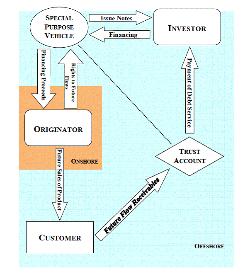











 |
 |
 |
 |
 |
 |
 |
 |
 |
 |
 |
 |
 |
 |
 |
 |
 |
 |


Sovereign Financing is crucial to finance infrastructure and develop sustainable market friendly growth structures

 Together with overall macroeconomic policy, debt management policy plays an important role in ensuring and maintaining long-term debt sustainability. But it is not the only factor to be taken into consideration according to Prof. Stiglitz, specially in Emerging Markets.
Together with overall macroeconomic policy, debt management policy plays an important role in ensuring and maintaining long-term debt sustainability. But it is not the only factor to be taken into consideration according to Prof. Stiglitz, specially in Emerging Markets.
To view our actual presentation on Governmental Financing in the Financial Crisis | please click here or for pdf click here |
To view our presentation on Indirect Colletarilzed Future Receipts and Carbon Credits in the case of Brazil | please click here |
To view our presentation on risk-management for governmental bonds | please click here |
| To view our standard contract | please click here |
Regettably, the current status of external debt management in the heavily indebted poor countries (HIPCs) - and other countries - using the results of a recent survey of the HIPCs and the main providers of technical assistance on external debt management together with the assessment by IMF and Worldbank staff, allows identifying mayor weaknesses in:
1) external debt management capacity,
2) priority areas for further improvement, and
3) the role of key international agencies involved in technical assistance and capacity building.
4) capital flow
5) the role of the Development Banks
The survey covered key aspects of external debt management, namely legal and institutional aspects, coordination with macroeconomic policies, new borrowing policy, and basic debt management functions, including human and technical resources.
 Survey results show that, although almost all HIPCs have benefited from sometimes extensive external technical assistance like IFC is providing through its Indirect Collateralized Future Receipts Arrangements in debt data recording and debt renegotiations, BUT very important weaknesses remain.
Survey results show that, although almost all HIPCs have benefited from sometimes extensive external technical assistance like IFC is providing through its Indirect Collateralized Future Receipts Arrangements in debt data recording and debt renegotiations, BUT very important weaknesses remain.
Needs and priorities tend to differ across countries, in large part according to their stage in the HIPC process. Countries at or close to the decision point need significant improvements in their basic debt management capacity including data management and debt renegotiation and institutional framework. Countries at or close to the completion point appear to have made greater progress in overall debt management capacity, in terms of legal and institutional framework, capacity to conduct day-to-day debt management operations, debt sustainability analysis and coordination with macroeconomic policy. Transparency and accountability, in particular as regards to new borrowing policy, appear however to be weak across the whole range of respondents, and will have to be strengthened in order to maintain long-term debt sustainability beyond the completion point.
Main conclusions and recommendations from the assessment of debt management capacity in HIPCs: Stronger and more continuous attention should be paid to debt management capacity building during the HIPC process by the countries themselves as well as by their development partners.
 In general, the HIPCs should focus on
In general, the HIPCs should focus on
a) adopting and enforcing a stronger legal framework and a clear institutional organization for debt management,
b) establishing functional debt units with adequate staff and equipment, and
c) identifying clearly the main needs and priorities for further capacity building. In this respect, it will be critical to reduce the high levels of turnover of debt unit staff by providing better incentives.
External providers of technical assistance and capacity building in external debt management as well as the donors or IFIs providing financing thereof could enhance their overall effectiveness in supporting capacity building
a) by improving the flow of information and coordination among themselves, and
b) more specifically target the country-specific needs and priorities.
c) A strengthened transfer of knowledge of skills and resources to the regional organization involved in capacity building would help enhance delivery and efficiency in delivery.
Identifying weaknesses in the debt management capacity and flag it to the authorities and to the network of potential providers of financing and technical assistance for debt management capacity building is the primary goal of any Sovereign Debt Renegotiation.
Debt and macroeconomic policy issues should be integrated into a comprehensive, forward-looking debt strategy focusing on long-term sustainability. Exploring the role of debt management units in the design and implementation of macroeconomic policies, as well as the extent of their interactions with other government bodies responsible for economic management, focusing in particular on their capacity to conduct debt sustainability analyses, is a key factor to success. An analysis of different countries shows that the capacity to develop a comprehensive debt strategy appears to be correlated with other aspects of debt management capacity, which are critical for maintaining long-term external debt sustainability:
 a) First, countries who have developed a comprehensive debt strategy also have the technical, analytical capacity and relevant information to produce regular and comprehensive DSAs and portfolio analyses;
a) First, countries who have developed a comprehensive debt strategy also have the technical, analytical capacity and relevant information to produce regular and comprehensive DSAs and portfolio analyses;
b) Second, these countries have a good, mostly institutionalized, coordination between macroeconomic and debt policies; and
c) Third, however, the reverse is not true: not all countries with good inter-agency coordination and/or the capacity to conduct a DSA did develop a debt strategy. This points to the importance of ownership and political will on the part of the country authorities.
Less than 50% of the countries have a debt strategy that went beyond the definition of a minimum grant element for new borrowing and only few countries had a comprehensive, forward-looking strategy focused on medium-term debt sustainability. The capacity to conduct regular DSAs is an important element in the elaboration of a debt strategy, as it involves handling debt and debt service projections, as well as projection of key macroeconomic variables.

Risks and Model Misspecification Problem

















